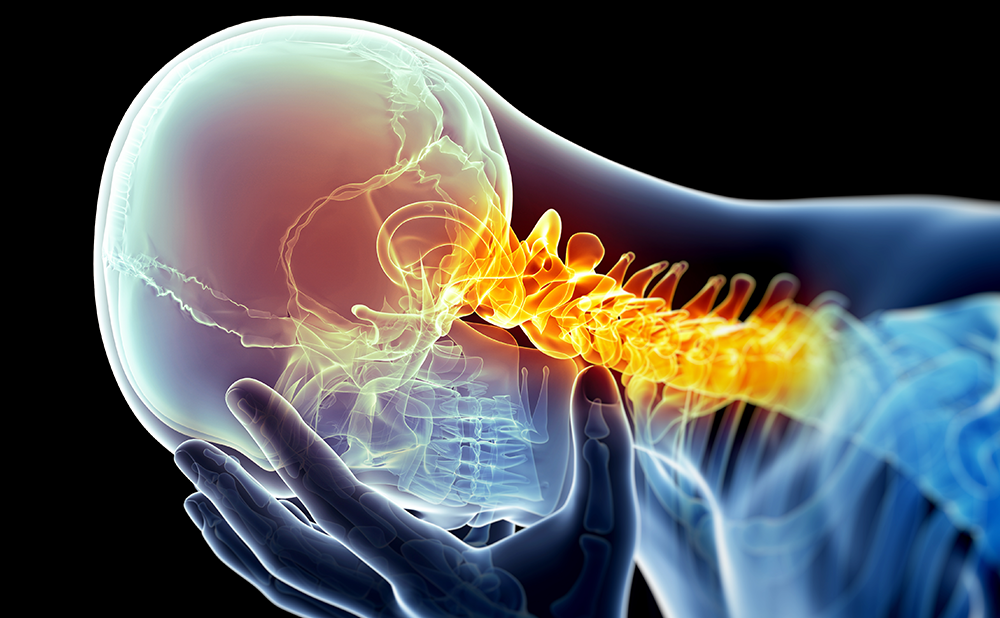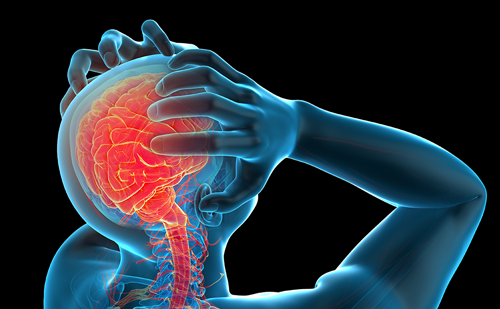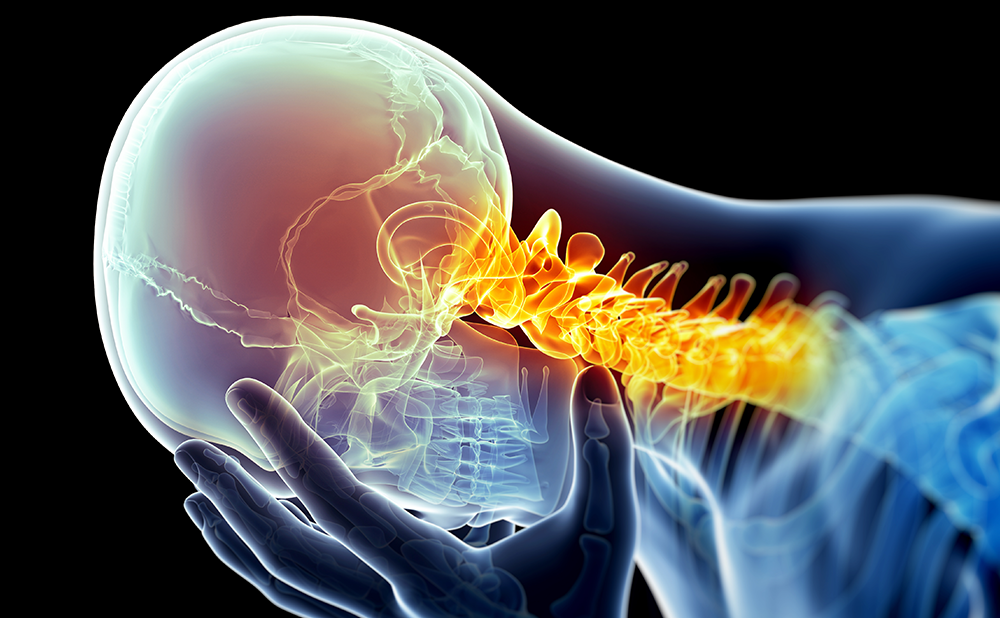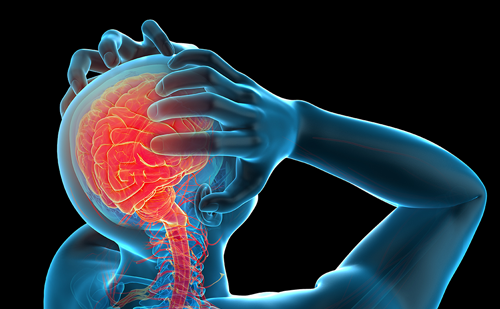Triptans
The triptans—sumatriptan, zolmitriptan, naratriptan, rizatriptan, almotriptan, frovatriptan and eletriptan— revolutionized the acute treatment of migraine when they became available over a decade ago. They are used at headache onset, and are available in several forms. All are available as tablets, while two— zolmitriptan and rizatriptan—are also available in orally dissolvable tablets. Sumatriptan has an injectable form, and sumatriptan and zolmitriptan are available as nasal sprays.
Though these drugs have been traditionally used as acute migraine medications, recent studies have suggested that the triptans can be used in the preventive treatment of headaches refractory to conventional first-line therapies. Rapoport et al.2 initially published a retrospective review of patients with transformed migraine using naratriptan preventively for extended periods of time, and found that there was a statistically significant reduction in the frequency of headache days at two months, six months, and one year after treatment was initiated. Some of these patients have remained on daily naratriptan for seven years without adverse events. Since the retrospective nature of the study limited the generalization of those results, Sheftell et al.3 conducted a prospective study assessing the efficacy, safety, and tolerability of naratriptan in the prevention of transformed migraine in patients refractory to traditional therapies. The intent-to-treat population comprised 30 subjects, who received naratriptan 2.5mg twice-daily for three months.A significant reduction in headache frequency was obtained at one, two, and three months. No serious adverse events were reported, and no significant changes were observed in blood pressure, heart rate, electrocardiograms or ophthalmologic exams.
Anti-epileptics
Topiramate
In recent years, topiramate, an anti-epileptic drug, has emerged as an effective choice for migraine prevention, and in 2004 it was approved by the US Food and Drug Administration (FDA) for that use.The exact mechanism by which topiramate works to prevent migraine is unknown. However, it is known to have multiple mechanisms of action, several of which may be involved in decreasing migraine frequency. Topiramate enhances the inhibitory effects of gamma-aminobutyric acid, blocks the excitatory effect of glutamate, blocks sodium channels, limiting repetitive firing, reduces calcium channel activity, and inhibits carbonic anhydrase.4,5
The efficacy of topiramate in migraine prevention has been shown in more patients in controlled trials than any other migraine preventive agent. Following a number of open-label and small controlled studies 6–9, several large, double-blind, placebo-controlled trials established that topiramate is effective as migraine preventive therapy. The recommended daily dose of topiramate for migraine prevention is 100mg, in two divided doses. Titration to target dose involves initiating the drug at 25mg at night and increasing by 25mg weekly until the target dose of 50mg twice daily, or the maximum-tolerated dose, is reached. At recommended doses, topiramate is generally well tolerated, although several potential adverse events must be discussed with the patient, such as cognitive dysfunction, paresthesias and weight loss.4,10,11
Levetiracetam
Levetiracetam (LEV) is an anti-epileptic drug whose mechanism of action is not fully understood. Its efficacy in migraine prevention may be related to a possible effect on cortical spreading depression, which is an early pathophysiological process in a migraine attack.12 Open-label trials have demonstrated the efficacy of LEV in the prevention of refractory migraine.13,14 A recent study by Rapoport et al.15 found a significant reduction in monthly headache frequency in patients on daily LEV after one, two, and three months. The minimally effective dose appears to be 1,500mg, and most patients need 2,000–2,500mg daily. No serious adverse events were reported. Zonisamide
Zonisamide is another new anti-epileptic drug with potential efficacy in preventing migraine. Its mechanisms of action include inhibition of voltagegated Na+ channels and T-type calcium channel blockage. In an open study16 involving 27 patients with refractory headaches, 100mg daily of zonisamide was titrated to 600mg daily over several weeks. Six subjects (22.2%) reported a 65% or better decrease in migraine frequency and eight (29.6%) had a 25–50% reduction in headache frequency. Another study17 using 10–400mg zonisamide reported similar efficacy profiles. Paresthesias, fatigue, anxiety, and weight loss were the most frequent adverse events reported.
Pregabalin
Pregabalin is a new drug that has analgesic, anticonvulsant, and anxiolytic effects. It was recently approved for the treatment of neuropathic pain associated with diabetic peripheral neuropathy and postherpetic neuralgia, and as an adjunctive therapy for adults with partial onset seizures. It modulates voltagegated calcium channels18 and is pharmacologically similar to gabapentin, which has been found to be effective in migraine prevention.19,20 Dizziness and somnolence are the most commonly reported side effects. Anecdotal evidence suggests that pregabalin might be useful in migraine prevention and that increase in body weight may occur. However, to date, no open-label or placebo-controlled trials evaluating this claim have been published.
Blood Pressure Medications
Candesartan
The angiotensin receptor blocker candesartan was evaluated in a prospective, randomized, double-blind crossover study with 60 patients.21 At a dose of 16mg daily it was found to reduce the mean number of headache days. It also significantly decreased headache severity, level of disability, and days of sick leave due to headache. The percentage of patients on candesartan who experienced a 50% or more reduction in the number of migraine days was 40.4%, compared with 3.5% for placebo. There were few adverse events.
Dietary Supplements, Vitamins, Minerals, and Herbs
Petasites
Petasites hybridus (butterbur) is a perennial shrub found in Europe that has been used medicinally for its analgesic and spasmolytic properties since ancient times. It was rediscovered in the middle of the 20th century and was used for migraine, asthma, urinary tract spasm, and back pain.22 Though the mechanism of action is not fully understood, P. hybridus is thought to act through calcium channel regulation and inhibition of peptide-leukotriene biosynthesis. Leukotrienes and other inflammatory mediators may have a role in the inflammatory cascade associated with migraine.23,24 In the US, the P. hybridus extract is marketed as a food supplement called Petadolex, which is a standardized patented extract of butterbur root containing 50mg of Petasites per capsule.
Several studies have been conducted to evaluate the efficacy of P. hybridus in migraine prevention. A randomized, double-blind, placebo-controlled trial by Grossman and Schmidrams,22 using 50mg of Petadolex twice-daily, showed a significantly reduced number of migraine attacks and migraine days per month. Lipton et al.25 compared P. hybridus extract 75mg twice-daily, 50mg twice-daily, and placebo twice-daily in a three-arm parallel-group randomized trial of 245 patients and found that the higher dose of P. hybridus extract was more effective than placebo in decreasing the number of monthly migraine attacks. In both studies, Petadolex was well-tolerated and no serious adverse events occurred. The most frequently reported adverse reactions considered possibly related to treatment were mild gastrointestinal (GI) events, predominantly eructation—burping.
Magnesium
Low brain magnesium has been hypothesized to be a cause of brain hyperexcitability in migraine,26 and several studies have shown low levels of magnesium in the migraine brain.27–30 However, trials investigating the use of magnesium supplementation for migraine prevention have yielded mixed results.31–33 Studies showing positive results were those involving patients with menstrual migraine and migraine with aura. Some of the discrepancy between the studies may be due to differences in the amount of magnesium, the type of salt used in the trials, and the degree of absorption of that salt from the GI tract. Mauskop et al.34 hypothesized that that the problem in some migraine patients is not low conventional serum magnesium levels but rather low ionized magnesium levels.Therefore, inclusion of patients with normal as well as low ionized magnesium levels may also explain the conflicting results of magnesium supplementation studies.
Despite the differing results of these studies, many clinicians believe that magnesium can be useful to some patients. The usual dose is 400mg daily.35 Reported side effects of magnesium treatment are diarrhea and gastric irritation.
Co-enzyme Q10
In some patients, mitochondrial dysfunction resulting in impaired oxygen metabolism has been implicated in migraine pathogenesis.36,37 Co-enzyme Q10 (CoQ10) is a naturally occurring substance and essential element in the mitochondrial electron transport chain. Rozen et al.38 studied the efficacy of CoQ10 as a migraine preventive treatment in an open-label trial. Thirty-two patients with migraine were treated with CoQ10 at a dose of 150mg daily. They found 61.3% of patients had a greater than 50% reduction in number of days with migraine headache. Mean reduction in migraine frequency after three months of treatment was 55.3%. No side effects were reported with the supplement.
More recently, Sandor et al.39 compared a soluble preparation of CoQ10 (100mg three times daily) and placebo in 42 migraine patients in a double-blind, randomized, placebo-controlled trial. CoQ10 was superior to placebo in reducing attack frequency, headache days, and days with nausea. Tolerability was excellent, with one adverse effect in the CoQ10 group—a cutaneous allergy.
Botulinum Tox in Type A
Botulinum toxin (Botox®) injections often reduce the pain associated with conditions such as cervical dystonia. Some open-label, non-controlled studies of Botox® have suggested benefits for patients with migraine and tension-type headaches.40–42 In a doubleblind study43 evaluating 25 unit (U) and 75U doses, 123 subjects with chronic migraine were randomized to receive injections of Botox® 25U, 75U, or placebo into glabellar, frontalis, and temporalis muscles. At three months, only the 25U group showed a significant decrease in migraine frequency and severity. Another study by Tepper44 assessing the efficacy of Botox® in 100 patients with refractory headaches showed a statistically significant reduction in the frequency of headache days, the headache index, and the number of severe headache days each month. These reductions were seen one month after Botox® was administered, and were maintained through the three months of the study.
The typical treatment protocol involves injection of Botox® symmetrically into glabellar, frontalis, temporalis, pericranial, and paracervical regions. Standard protocols use a total of 60–100U per treatment. Beneficial effects generally last for three to four months. The major side effect, avoidable with proper injection placement, is mild ptosis that usually resolves within one week.45 Studies are currently underway comparing high doses of Botox® against placebo in patients with chronic and transformed migraine.
Miscellaneous
Montelukast
Inflammatory mediators such as leukotrienes and prostaglandins may play a role in the pathophysiology of migraine.24 Therefore, it is believed that leukotriene antagonists can be used in migraine prevention. The clinical observation of a decrease in migraine frequency in asthma patients taking montelukast, a specific D4 leukotriene receptor antagonist, led Sheftell et al.46 to conduct the first open study using montelukast sodium, 10 or 20mg daily, in migraine prevention. Fifty-three per cent of the patients showed a reduction greater than 50% in the frequency of severe attacks. No adverse events were reported. One controlled study was negative. To better evaluate the potential of montelukast as a migraine preventive agent, one additional well-designed doubleblinded, placebo-controlled study needs to be conducted.
Conclusions
Over the past two decades, great strides have been made in the understanding of migraine pathophysiology. Armed with this knowledge, researchers are better able to devise treatment alternatives that can work at specific points in the cascade of events involved in migraine generation.Though the disability caused by migraine is associated with an enormous economic and personal burden, the new and emerging options described above should give hope that these burdens will diminish in years to come.As our understanding of migraine grows, we can also expect that safe and tolerable preventive agents will continue to be developed.












